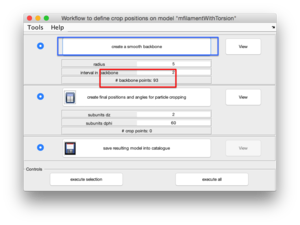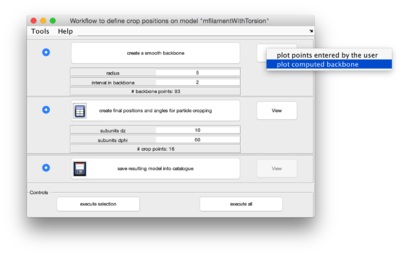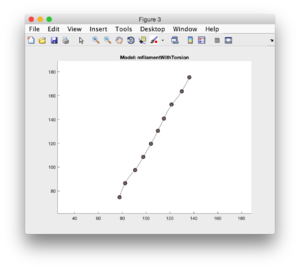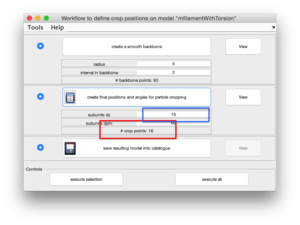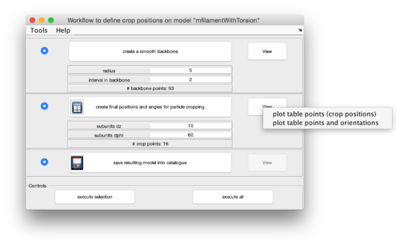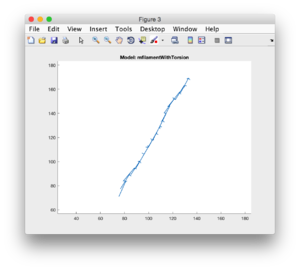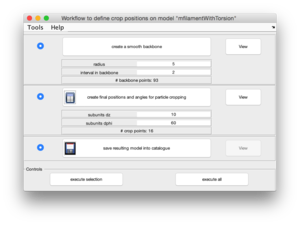Difference between revisions of "Walkthrough model worfklow reuse"
| Line 23: | Line 23: | ||
{|style="margin: 0 auto;" | {|style="margin: 0 auto;" | ||
| − | | [[File: | + | | [[File:ReuseWorkflowPlotTableSketchOrder.png|thumb|upright|400px| right click to get the plotting options of a step. ]] |
| − | | [[File: | + | | [[File:ReuseWorkflowPlotTableSketch.png|thumb|upright|300px|created points and orientations ]] |
|} | |} | ||
| + | |||
| + | ... not forgetting to save the ''model'' into the catalogue. The model will contain the generated <tt>crop_points</tt> and also the parameter values used to generate them. | ||
| + | |||
| + | [[File:ReuseWorkflowSaveModel.png|thumb|center|300px|Saving the ''model'']] | ||
Revision as of 05:20, 17 August 2016
This walkthrough shows how to reuse the geometric computations performed on a single model onto a larger set of models.
We can use a synthetic tomogram containing different tubular structures. In this catalogue, we open the tomogram with dtmslice, and then define a filament model following the usual procedure, so that we end up with a single model containing a set on points.
We will now define a workflow, i.e., a method of converting points into crop_points.
We open the workflow editor of the active model, and start operating the steps, checking graphically the result of each parameter selection. We create first a backbone, selecting the interval between backbone elements.
And check how the results looks like:
We then proceed for the next step: selection of the interval (in pixels) between two consecutive crop points.
And check again the results:
... not forgetting to save the model into the catalogue. The model will contain the generated crop_points and also the parameter values used to generate them.
